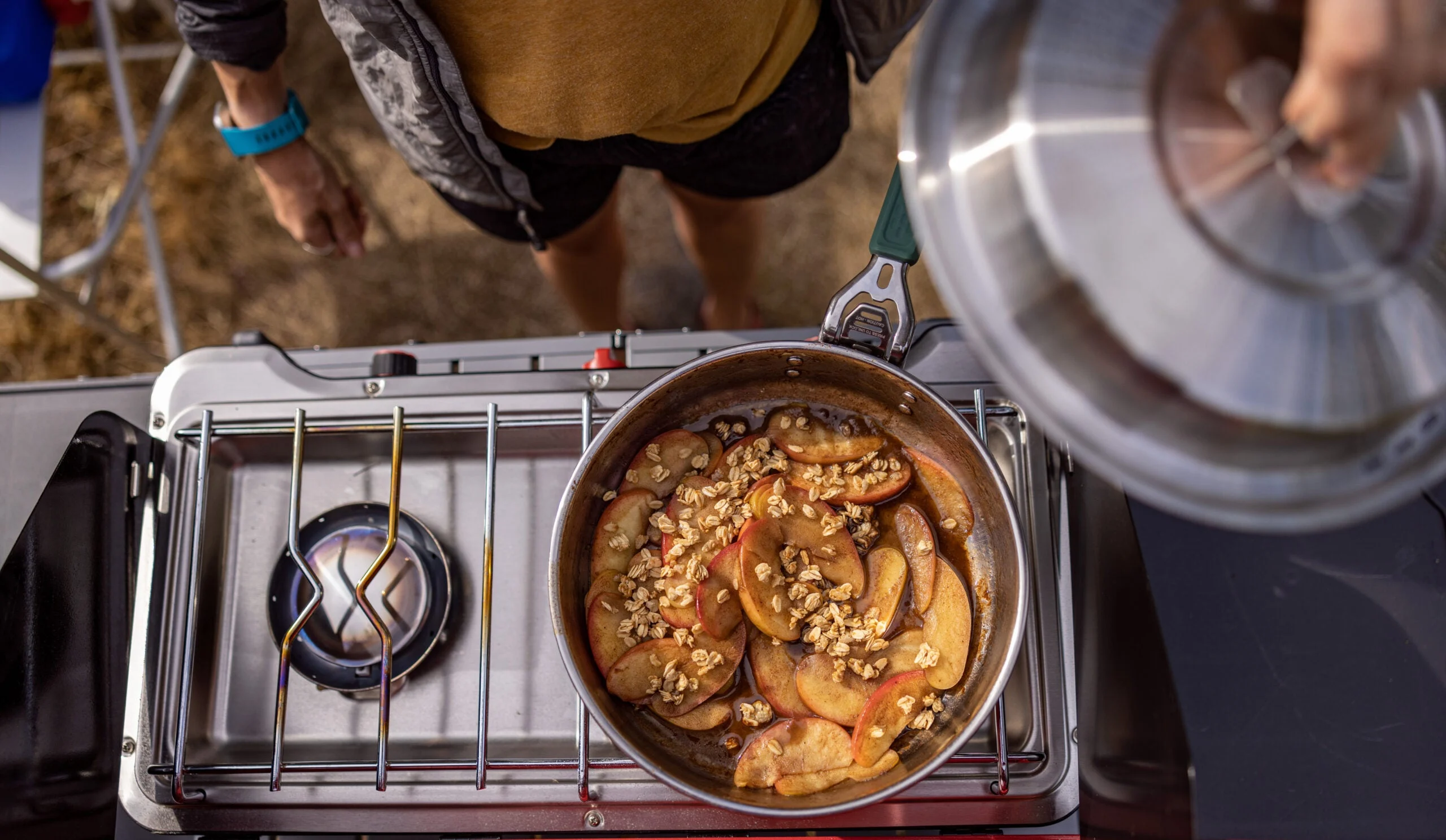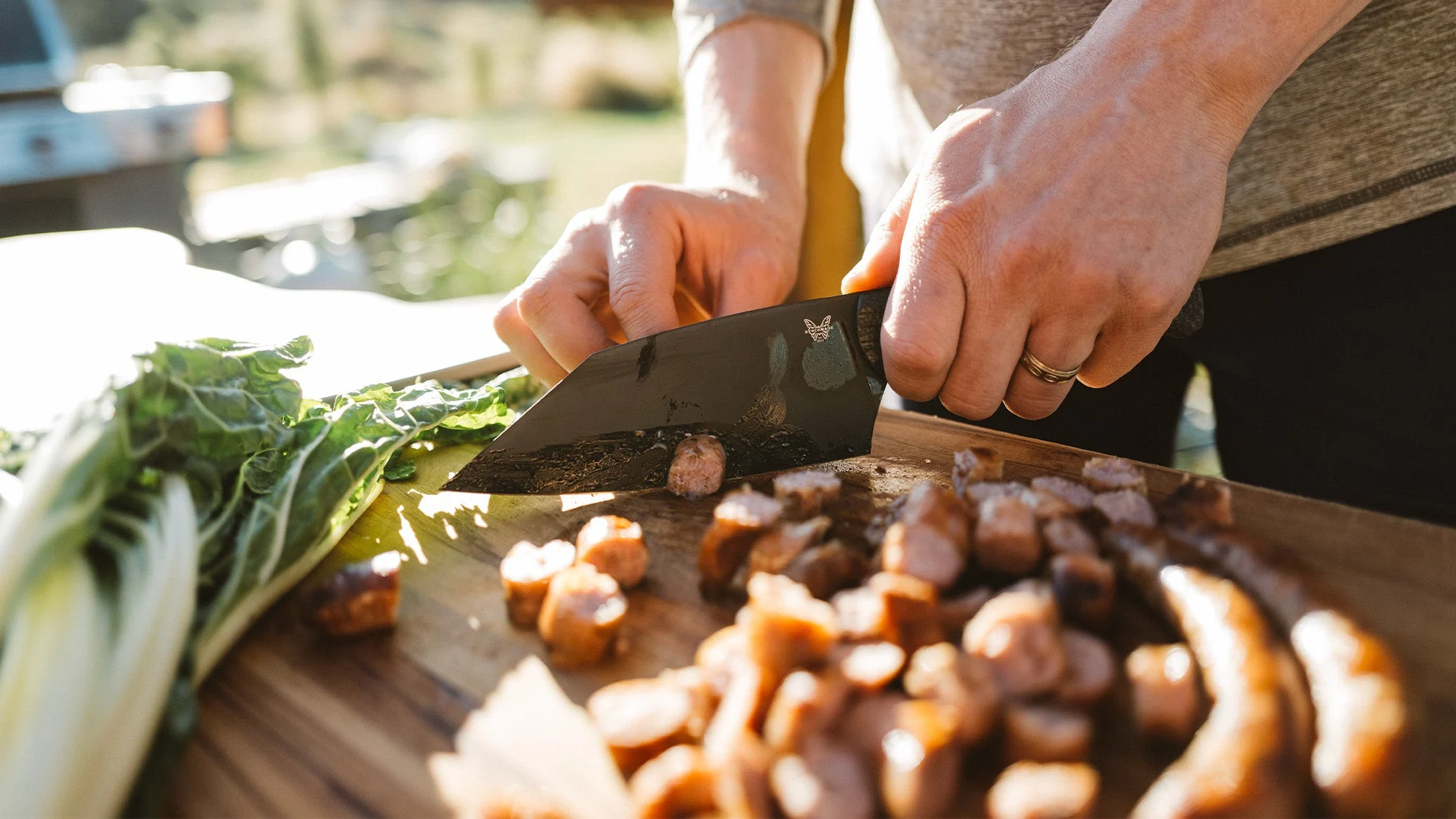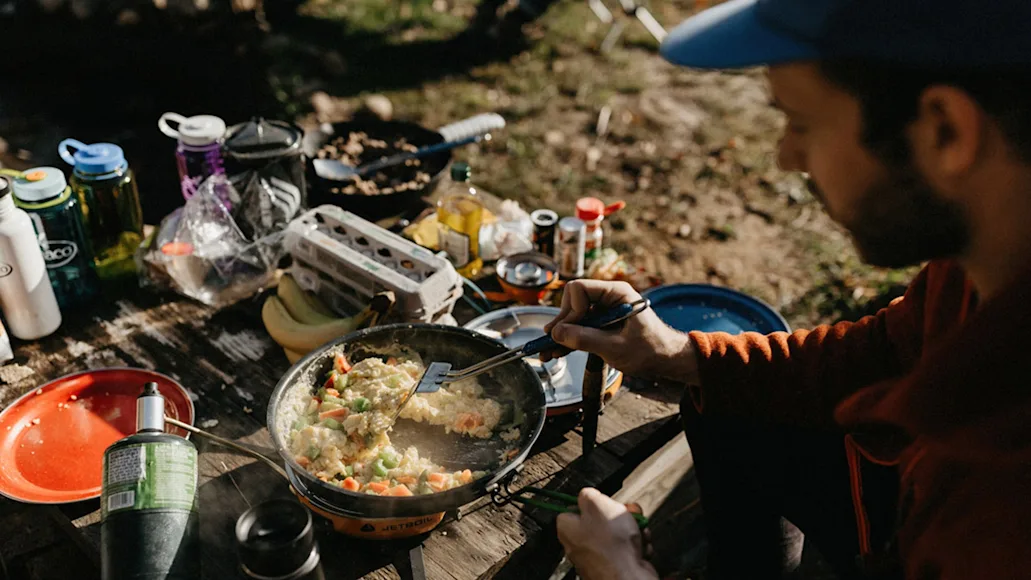_We may earn revenue from the products available on this page and participate in affiliate programs. Learn more ›
_
Food takes on a special significance in the outdoors. In our busy, day-to-day lives, it’s easy for meals to become secondhand thoughts. We eat them at our desks, in front of the screen, and in passing. Cooking and eating outside, whether at deer camp
, or just a summer vacation
, requires attention and forethought.
Your camp kitchen is the foundation for great meals
in the woods. The downside to cooking in camp is the lack of accommodations that you normally have at home. So you have to be extra attentive when putting together your gear. The upside is that a limited kitchen can inspire creative meals, elevating the humble campsite to an excellent cookhouse. Here are eight tips to transform your camp kitchen from hot dogs on sticks to something worth writing home about.

Start planning meals that are suitable for two burner stoves. Gerber
1. Lean Into Preparation
Before departing on your trip, meal plan and meal prep in the comfort of your home kitchen. I find it helpful to do the heavy prep work ahead of time—forming burger patties and dicing onions are all easier with a garbage disposal on hand. Prepping your meals beforehand and transferring the bundled ingredients into a cooler for easy campsite cooking is a game changer. A little mise en place goes a long way, especially after a long day of hiking, fishing, or hunting. Make sure to pack cooking oils, fats (like butter), and plenty of spices. Hunger might be the best seasoning, but it doesn’t have to be the only one.
2. Find Level Ground
This might sound like common knowledge, but pancakes don’t cook well at a 45-degree angle. Before firing up your camp stove, take the time to create a relatively level space. Firewood is an excellent (and customizable) leveler for picnic tables and other cooking surfaces. Some camp tables come with adjustable legs, and some camp stoves (like Jetboil’s excellent but pricey Genesis
) are designed to accommodate variations of cooking levels, so your tree stumps don’t have to be precisely the same size.
3. Organize Your Cooking Flow
In your home kitchen, you’re stuck with whatever your layout is. In the outdoors, you’re the architect. Sure, there are some limitations—lack of counter space and plumbing—but generally, you can set up a good prep area from cooking to dishwashing to eating. I’ve found packing an extra cooking table (like this one from DOD outdoors
) can be helpful in your prep work. There may be a picnic table at your campsite, but your dinner companions need someplace to set their plates down, and camp dinners often come in waves.
4. Sharpen Your Knives and Use the Proper Cookware
Having a good chef knife or a properly sharpened, large outdoor knife makes everything easier. You can trust a sharp knife to cut evenly every time. A dull knife is unpredictable. Also, make sure you pack cookware that can take a beating. You can pick these up brand new at your local Cabela’s, but you can also scratch them together at your local thrift shop. There’s nothing wrong with either approach. Just leave the fancy, matching sets behind. And if you plan on using the fire pit (you should), make sure at least one of those pans is cast iron.

A sharp knife is crucial for cooking at camp. Benchmade
5. Invest in a Good Camp Stove
Good doesn’t necessarily mean expensive. Some of the best meals I’ve cooked outdoors were on a decades-old Coleman two-burner that I’m pretty sure my Dad borrowed from my Grandpa and never gave back. So embrace the two-burner life. Most basecamp-friendly camp stoves have two burners, so think about recipes that are at home on the range: one burner for boiling water, another for sauteing veggies and prepping pasta sauce. It doesn’t have to be dorm kitchen or hot-plate cooking, but any good, simple recipe you can cook on your kitchen range translates well to modern camp stoves.
6. Don’t Forget the Fire Pit
All you need for proper cooking conditions is a little bit of fire. The firepit is a grill, oven, and range all rolled together in your camp kitchen setup. You can use it as your primary cooking venue, keep something warm in the coals, or supplement your camp stove offerings with a more primal version. Don’t be afraid to embrace it. It’s capable of more than just s’mores.
If you do use a campfire, get cookware that will do double duty, like a sturdy cast iron saute pan and Dutch oven. As previously mentioned, if you’re not backpacking, cast iron is a camp kitchen hero. No fire ring at the campsite? Pack your own. Brands like Snowpeak make handy (and flat folding) takibis
and Solo Stove has modes for their smokeless fireplace that transform it into a campsite multi-hyphenate.
7. “Camp Clean” Your Dishes
Does anything actually get clean outside? Not really, but there are different shades of dirty. And there’s nothing worse than starting dinner prep and realizing the breakfast egg is still caked all over the pan. As soon as the meal is wrapped up, help out your future self by camp cleaning the dishes. That is, getting them possibly clean enough to start your next meal as soon as your stomach starts rumbling.
8. Embrace Imperfection
Your campsite isn’t a Michelin-starred restaurant—food can be a little wonky and still taste good. You’ll drop things, you’ll probably burn things, and sometimes you forget about the brownies that are in the Dutch oven until the morning. This is part of the joy of cooking outside—even when it’s a little messy, you’re still outside. And mistakes make better stories anyway.

